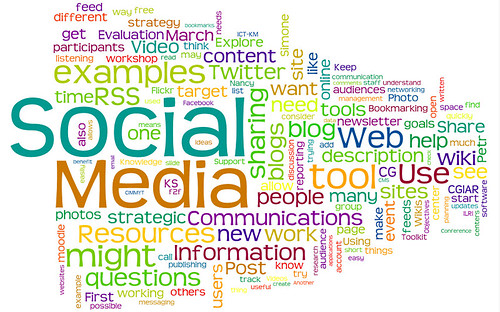
Computers and the Internet have certainly revolutionized and challenged our relationship with information, but they have also introduced entirely new media - new, more participatory forms of sharing information. These integrate multiple modes of communication (text, images, audio, video, 3D renders, etc.) in a way that is inherently digital and was seldom seen, if not impossible, before the advent of ubiquitous computing. Examples of new media include image-sharing sites like Flickr, Instagram or Pinterest, as well as alternative "broadcasting" methods like blogs, podcasts, Twitter feeds and YouTube or Vine channels.
Regardless of whether one participates in some, all, or none of these new forms of communication, the fact is that they are slowly changing the way we relate to knowledge and to each other. To learn more about the significance of emerging media in education and the workplace, see the following:
Source: www.educause.edu/research-and-publications/books/educating-net-generation/planning-neomillennial-learning-styles-implications-investments-tech
Source: projects.cberdata.org/2/emerging-media-prevalence-and-impact-in-the-workplace
These brief definitions, obtained from each term's Wikipedia article, are intended as a general reference to help you navigate the different tools and trends associated with learning technology:

Source: https://wgbyeducation.wordpress.com/2012/07/31/survey-results-from-a-pbs-learningmedia-survey-on-teaching-with-technology/
The CTL Studio is a learning environment designed for creativity, innovation, and collaboration. As part of Otterbein’s Center for Teaching & Learning, it provides a faculty-focused, safe, and knowledge-rich space for pedagogical and design support. See our Studio page for more information.
ePortfolios are content-sharing platforms designed to showcase evidence of learning and reflection along with your interests and accomplishments. At Otterbein, we use Digication as our campus-wide ePortfolio system. See our ePorftolio page for more information.
Virtual classrooms are online teaching and presentation platforms that let you conduct and record live sessions in which participants can view content, engage in real-time discussions, and work cooperatively using a wide range of interactive tools. At Otterbein, we use Blackboard Collaborate as our virtual classroom system. See our Blackboard Collaborate page for more information.
Learning Management Systems (LMS) are Web-based suites of educational and communications tools that help faculty and students coordinate synchronous and asynchronous learning activities. At Otterbein, we use Blackboard Learn as our LMS. See our Blackboard Learn page for more information.
LibGuides (like the one you are reading now) collect information and resources related to a wide range of academic topics, from information literacy for students to course design for faculty. Faculty can also work together with a librarian to build LibGuides tailored to specific courses, programs, or projects. See the Library's LibGuides page for more information.
From a technical standpoint, social media and social networking sites are different from learning technologies as systems, but from a perspective of communication and functionality, the differences between them are minimal (you can even take a quiz on Facebook!). That doesn't mean they are they same, but rather that they rely on the same social (i.e., human) relationships, only with a different focus and intended outcomes. The same way that a traditional classroom, a corporate boardroom, and the area around an office water cooler all support or suggest different types of discussion and information sharing. These article might help you generate some ideas about how you could integrate social media into your teaching or research:
How I use Social Media 
by Nancy White, Full Circle Associates
Co-author of Digital Habitats: stewarding technology for communities
Source: www.fullcirc.com/2009/08/04/how-i-use-social-media/
Effective Social Media Practices and Good Online Teaching
Inside Higher Ed (Blog, Chronicle of Higher Ed.)
by Dr. Joshua Kim, Director of Digital Learning Initiatives at the Dartmouth Center for the Advancement of Learning
Source: www.insidehighered.com/blogs/technology-and-learning/effective-social-media-practices-and-good-online-teaching

Source: www.ibm.com/developerworks/community/blogs/82288880-044e-425b-8c33-eff85a81d066/entry/10-emerging-technologies